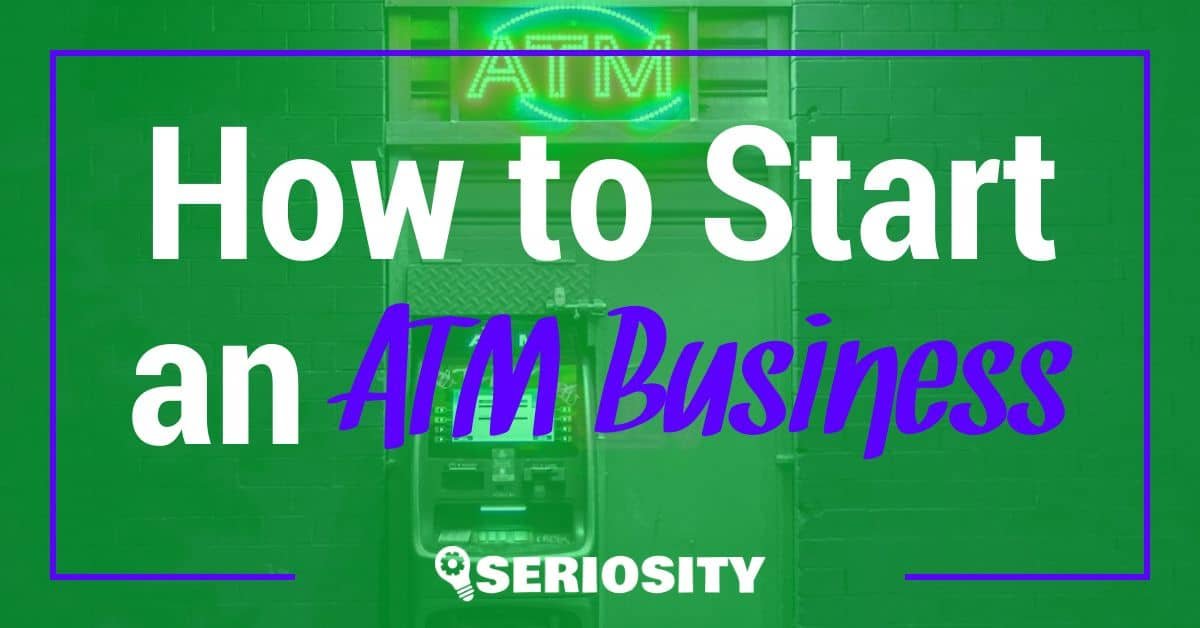Are you interested in starting an ATM business? You can earn significant passive income from ATM surcharges with the right strategy. In this article, we’ll take you through the steps of starting an ATM business, including where to place your ATMs, how to choose a supplier, setting up transaction processing, cash management, and marketing your business.
Step 1: Secure funding for your business
Starting an ATM business will require an initial investment, including purchasing ATMs, leasing space, and setting up infrastructure. Depending on the number of machines you plan to operate, you may need to secure a business loan, seek out investors, or consider other financing options, such as using some of your savings.
Step 2: Choose a Location
Choosing the right location is one of the most important aspects of starting an ATM business, as you’ll earn based on the number of transactions processed in a day. Here are some tips to ensure you choose the best location:
- High-traffic areas: Look for a location with high foot traffic or vehicle traffic, for instance, shopping malls, convenience stores, gas stations, or busy street corners. The more people pass by your ATM, the more likely they will use it. Also, look for areas with a mix of businesses and residences and a diverse range of age groups and income levels.
- Accessibility: Find a location that is easily accessible and visible to the public. Ensure it’s well-lit and located in a safe, secure area, preferably with security cameras or other security measures.
- Competition: Avoid locations with a high concentration of ATMs. Instead, find a site with a demand for ATM services but a limited supply
- Partnership opportunities: Consider partnering with other businesses to place your ATM on their premises. This can create a mutually beneficial relationship where each partner increases foot traffic and visibility for the other.
- Regulatory compliance: Ensure your target location complies with all the relevant laws and regulations governing ATMs’ placement, such as zoning regulations and ADA accessibility requirements.
By considering these factors, you can choose the best locations for your ATMs and maximize the profitability of your ATM business
Step 3: Choose an ATM Supplier
Once you have a location for your ATM, you’ll need to choose an ATM supplier. An ATM supplier is a company or individual that provides ATMs for purchase or lease. They are responsible for sourcing the machines, installing them, and providing ongoing maintenance and support.
They liaise with manufacturers to offer a range of machines that meet the needs of different businesses and locations. Some suppliers may specialize in certain ATMs, such as free-standing units, countertop models, or drive-thru ATMs. In addition to supplying ATMs, some suppliers may offer transaction processing, cash management, and marketing support to help ATM operators maximize their revenue and grow their business.
Look for a supplier that offers reliable, high-quality equipment and excellent customer service. Some popular ATM suppliers include Hyosung, Nautilus Hyosung, Genmega, Triton, and Hantle. Also, consider the following factors:
- Equipment cost: Compare prices from different suppliers to find the best deal.
- Equipment reliability: Look for suppliers with a reputation for building reliable equipment.
- Customer service: Choose a supplier with excellent customer service, so you can get help quickly if you encounter any issues.
- Compatibility: Make sure the ATM you choose is compatible with the transaction processing system you plan to use.
Step 4: Set up Transaction Processing
You must set up a transaction processing system to accept debit and credit card transactions. Many transaction processing providers exist, such as Elavon, Global Payments, and First Data. Consider the following to ensure you choose the right one:
- Transaction fees: Compare transaction fees from different providers to find the best deal.
- Customer service: Choose a provider with excellent customer service, so you can get help quickly if you encounter any issues.
- Equipment compatibility: Make sure the transaction processing system you choose is compatible with the ATM equipment you plan to use.
- Contract terms: Read the contract terms carefully and ensure you understand the fees, terms, and conditions.
Step 5: Set up Cash Management
You’ll need to set up a cash management system to keep your ATMs stocked with cash. An effective cash management system ensures an ATM business operates smoothly and efficiently. It helps minimize the risk of cash shortages or overages, reduces the likelihood of errors or discrepancies in the cash balance, and ensures that cash is always available for customers who need it. There are a few options for managing cash, including singlehandedly managing the process by visiting each ATM and refilling it with money as needed. This is cost-effective but time-consuming and risky as you’ll carry cash. The other option is:
A Cash-in-Transit Service
A cash-in-transit (CIT) service is a specialized security service responsible for transporting cash and other valuable items from one location to another. CIT companies hire trained security personnel to protect cash and valuables from theft, robbery, and other risks during transport. These services will visit your ATMs, refill them with cash, and take it to the bank for you. This option can be expensive but the safest. Here are some tips for choosing a reliable CIT:
- Reputation: Engage a CIT service with a proven reliability and security track record. Check out online reviews and ask for references from other ATM operators.
- Insurance: Ensure the CIT service carries adequate insurance to cover any losses or damages that may occur in transit.
- Experience: Only hire a CIT service with experience in the ATM industry and a thorough understanding of the security and logistics involved in cash handling
- Technology: Look for a CIT service that uses modern technology to enhance cash security, such as GPS tracking, real-time monitoring, and armored vehicles
- Customer service: Hire a CIT service that is responsive to your needs and concerns and provides clear communication and proper support when needed.
Step 6: Market Your Business
To attract customers to your ATMs, you’ll need to market your business. You’ll need to develop a brand for your ATM business that is memorable and recognizable. This includes creating a logo, slogan, and other marketing materials that promote your brand. Here are some marketing strategies you can use:
- Signage: Place signs on your ATMs and around your location to let people know your ATMs are available. Ensure the signs are clear and easily read, with your branding and contact information displayed.
- Social media: Use social media platforms like Facebook and Twitter to promote your ATM business. Share photos and information about your machines, special offers, and other promotions to attract new customers.
- Promotions: Offer promotions or discounts to attract new customers to your ATMs. This could include offering a cash bonus for first-time users or discounts on transaction fees.
- Referral programs: Offer a referral program to customers who bring in new business. For example, you could discount transaction fees to customers who refer their friends to your ATMs.
- Networking: Attend networking events and conferences in your area to meet other business owners and potential customers. Bring business cards and other promotional materials to hand out. This can help you build relationships with other businesses and find new locations to place your ATMs.
- Advertising: Consider placing ads in local newspapers, magazines, or on local radio stations to reach potential customers.
- Customer service: Provide excellent customer service to your customers, including responding quickly to any issues or concerns they may have to build loyalty and keep those in your ATM locations returning.
Remember, being creative and persistent is the key to marketing your ATM business successfully. Keep experimenting with different marketing strategies until you find the ones that work best for your business.
Step 7: Seek Out Feedback
Seeking feedback and constructive criticism will help you identify areas in which your business needs improvement. It will also help you better understand your target customer’s needs and expectations, thus addressing them better and improving their experience. Seeking out feedback can also help put you ahead of trends in the industry, ensuring your ATM business remains competitive in a rapidly evolving market. Since an ATM business is primarily hands-free, here are some creative ways to seek out feedback:
- Social media: Use social media platforms to connect with your customers and solicit feedback. Encourage customers to leave reviews on Yelp, Google reviews, or other relevant platforms. You can also set up social media polls or surveys to gather feedback.
- Incentivize feedback: Offer a reward to customers who provide feedback. This could be in the form of a discount on their next transaction or a small cash reward for completing a survey
- Feedback box: Install a feedback box near your ATM to allow customers to leave anonymous feedback and suggestions





